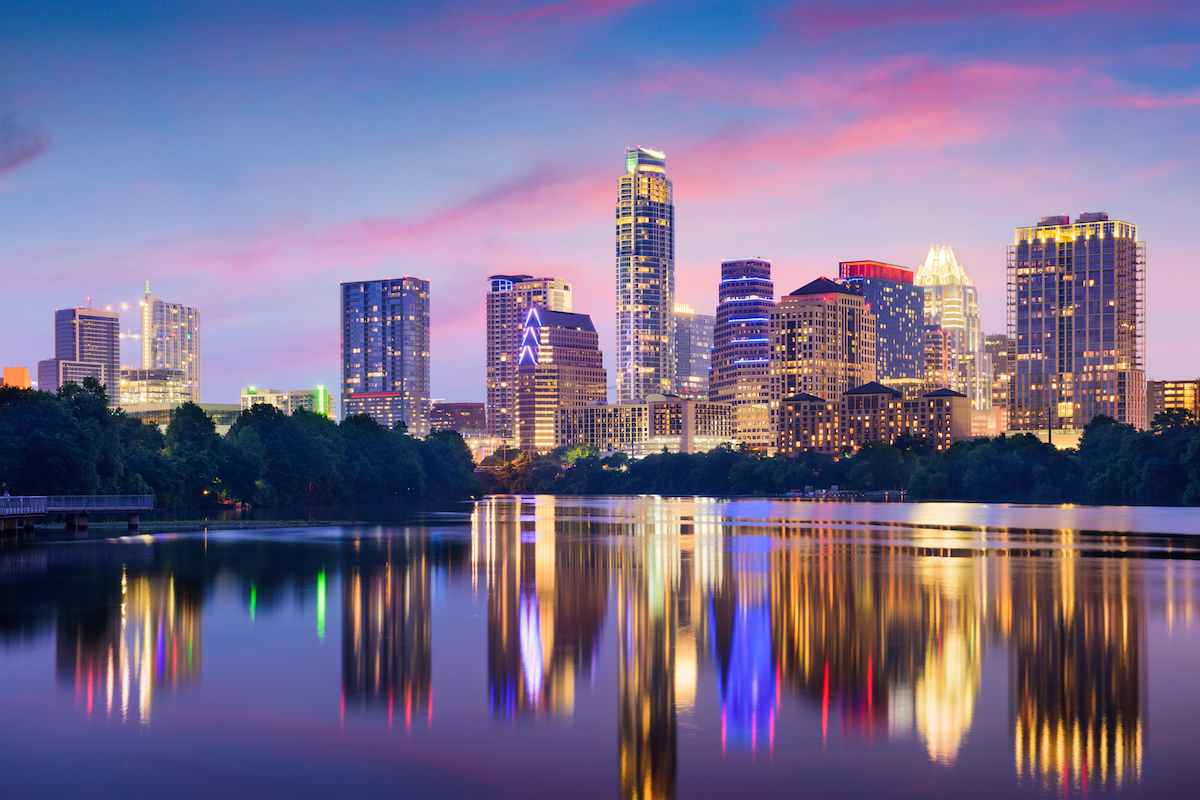-
The Economy
Austin’s economy is officially growing at around 6% a year; in 2016, Forbes named it ‘America’s fastest growing city’. Like most of Texas, it missed both the mid-2000s real estate boom and the accompanying bust, while tech firms went right on expanding.
There’s a steady supply of new land for homebuilding, and as of early 2017 the city had nearly two-million-feet of new office space under construction. One result: an early 2017 unemployment rate of just 3.4%.
-
Music
Austin’s South by Southwest (SXSW) is a startling collision of music, film, interactive media, culture and business. The vibe is less stereotypical Texan than black t-shirt emo; an attendee might manage projects for a digital agency by day and play in a punk band by night.
The busy music scene began around non-conformist country musicians like Willie Nelson – central to Austin’s ‘weird’ self-image – then grew to encompass folk, blues, jazz, bluegrass, tejano, zydeco, new wave, punk, and indie genres.
-
The creative class
For many observers, Austin is the ‘creative class’ theory in action. 15 years ago urbanist Richard Florida argued that growth-hungry cities should work at attracting smart, creative people, as ‘weirdness, eccentricity and difference’ were essential to a city fostering technological innovation.
Austin has all that, as well as one of the US’s highest shares of workers with a college degree. It’s a slightly scaled-down US version of Australia’s Melbourne, but with a lot more technology-driven growth.
-
Transport
Austin grew up relying on private cars and buses, and attempts to branch out have mostly failed. The 2010 insertion of a US$148-million rail system is yet to have much impact on the city’s road network; one critic calls it ‘perhaps America’s leading rail transit failure’. Uber and Lyft left the city in 2016 after voters demanded tougher background checks on drivers; a new Texas law will soon bring them back.
-
The Silicon Valley connection
Economist Enrico Moretti says Austin does not so much compete with Silicon Valley as complement it. “The two are linked by a constant flow of college-educated high-tech professionals who shuttle between the two regions,” he wrote in his 2012 book The New Geography of Jobs.
-
UT
Economist Mark Zandi once offered perhaps the simplest explanation for Austin’s surge: “The University of Texas (UT) got all that oil money and invested it in technology.” UT Austin is a global top-50 institution in most rankings, its 51,000-student campus sprawling across the city’s centre.
With a long history in engineering and the physical sciences, UT churns out programmers, battery and solar cell engineers, transport and water specialists, defence technologists and more.
-
The book
In the 2010 book Weird City, Southwestern University’s Professor Joshua Long portrays Austin as a city consciously resisting turning into Houston, its larger brother on the coast just 230 kilometres away.
The city should try to preserve the quirky culture of recent decades while its population soars and its borders expand. So far, Austinites seem to agree.
-
Biggest business
- Dell, the world’s largest manufacturer of computer monitors and third-largest PC vendor, headquarters itself in Round Rock, in Austin’s northern suburbs.
- Apple chose to build its largest campus outside Cupertino here, moving 5,300 staff into a 15-hectare, six-building centre in 2016 where, among other things, it designs cutting-edge chips.
- High-end grocery chain Whole Foods Market, founded and headquartered in Austin, has grown into a US$11.5 billion giant with more than 450 stores



